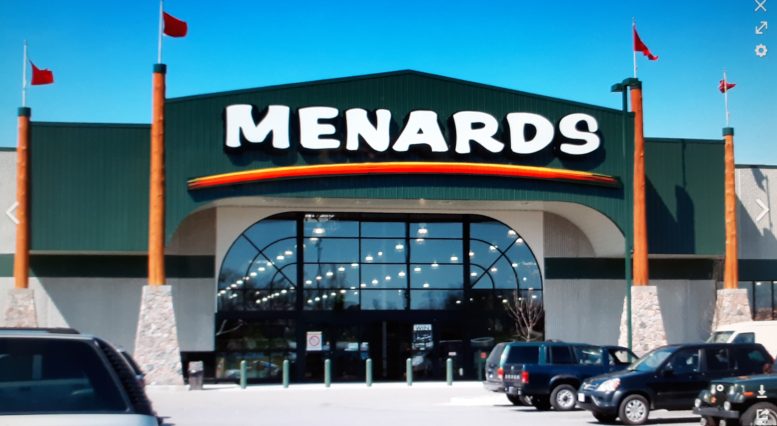By JAN LARSON McLAUGHLIN
BG Independent News
Bowling Green officials have been told the city needs to tidy up its “sign clutter.” Tuesday evening, the city took a step to do just that when Menard’s requested a sign that would far exceed the city’s standards.
That meant the city’s Zoning Board of Appeals might have had to reject a variance request from Menard’s – which hadn’t yet purchased the 26 acres to build on along the 1200 block of South Main Street, south of Walmart and across Main Street from Home Depot.
But before the zoning board ruled Wednesday evening, the company withdrew its request for the massive sign. The pylon sign would have been 15 feet taller than the allowed maximum height of 25 feet, and 110 square feet larger than the 90 square feet maximum.
“You could see it from Cincinnati, I think,” said Judy Ennis, head of the zoning board of appeals.
The withdrawal of the request saved the board from a tough decision, Ennis said.
“They said they wanted to be a good neighbor,” she said Menard’s officials.
But while Menard’s pulled its variance request for the large pylon sign, the company stuck with its request for two other sign variances. One was for a wall sign which would be 306 square feet larger than the 90 square feet maximum size allowed. The other was for a total of 12 signs (one pylon sign and 11 wall signs), which would exceed the maximum of three signs allowed for a business. The 12 signs would also exceed the allowable 270 total square footage in signage by 552 square feet.
But because of the massive size of the store and the distance it will sit back from the road, the zoning board of appeals granted both of those variance requests.
“This store is going to be bigger than most that they have,” Ennis said. And most of the signs will be directional.
Menard’s officials told the board Wednesday evening that they want to be ready to open in the spring of 2020.
Ennis said she was glad that the store officials seemed to understand the city’s desire to reduce sign clutter and improve aesthetics. It would have been a difficult decision for the board to reject the company’s request – especially since the store had not yet taken the step to purchase the property.
City Planning Director Heather Sayler had written a letter to the company explaining the city’s position.
“The city simply said they wanted Menard’s to understand they were pleased Menard’s was coming to the city,” but officials wanted the store to comply with signage rules.
“We didn’t want anyone to think Bowling Green was unfriendly to business,” Ennis said.
Sayler’s letter explained that recent planning efforts in the city have recommended that Bowling Green reduce its sign pollution. The newly-adopted Community Action Plan suggested tighter sign controls, and the Future Land Use Plan recommended distinctive signage and design guidelines along North and South Main streets.
Sayler also pointed out that variances remain with the land perpetually. So even if Menard’s were to move, the variance would stay in place. And she said the pylon sign would be out of character for this area of South Main Street. The adjacent pylon signs at Home Depot and WalMart comply with the city’s zoning code. The closest sign variance for height and size is for McDonald’s on South Main Street, which was a legal non-conforming sign first built in the 1970s, Sayler said.
According to Sayler, many communities are adopting tougher rules for signage. So if variances are requested, a company is often asked to prove hardship.
Besides, she said, Bowling Green’s existing sign rules are not strict.
“I think our sign code is fairly liberal,” Sayler said.

